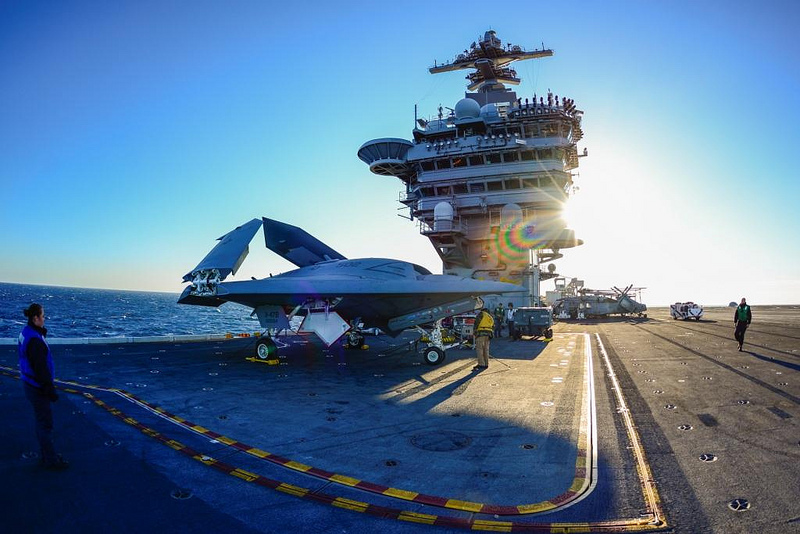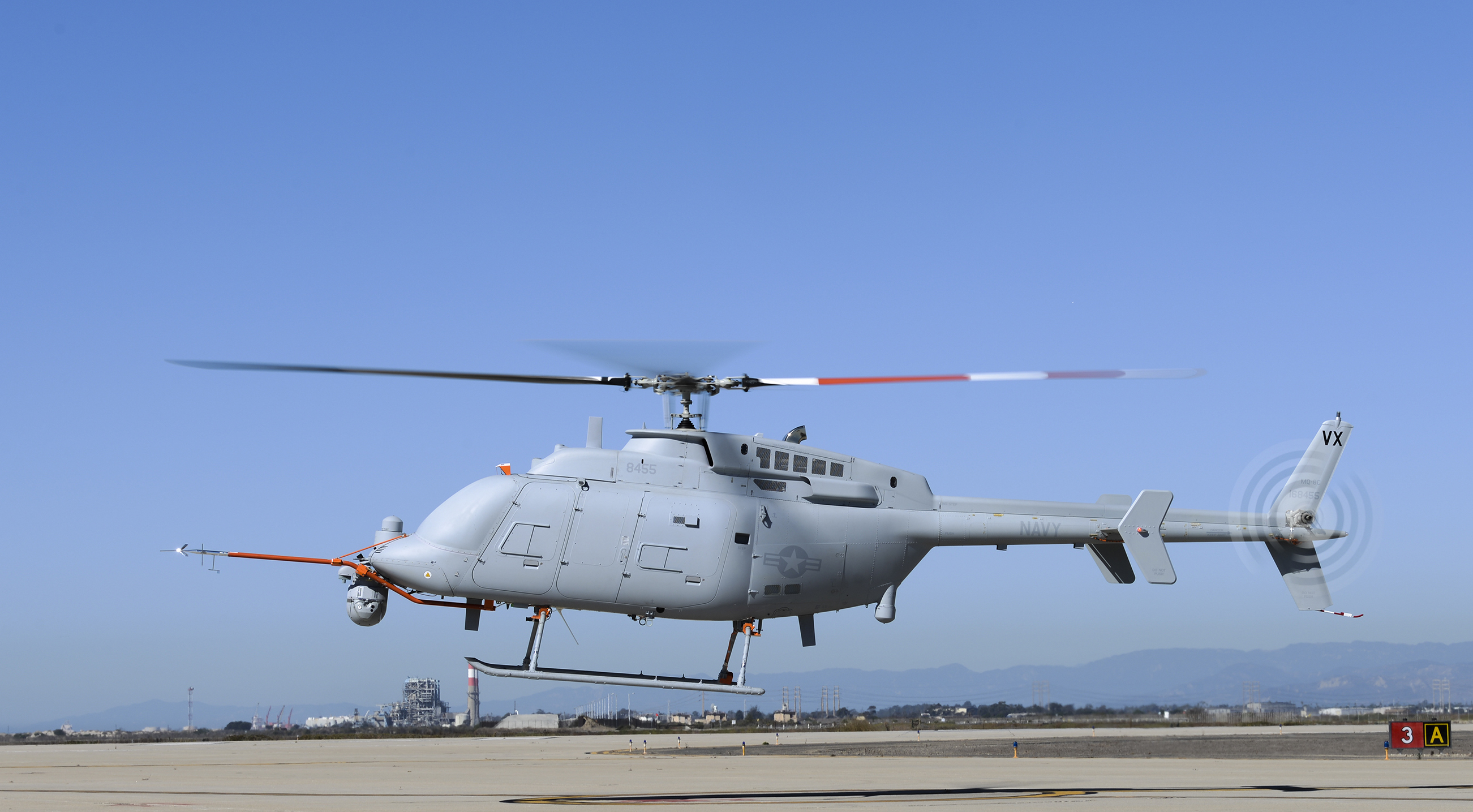
CAPITOL HILL – The Navy is sticking to its plans to field an unmanned MQ-XX Stingray platform with just tanking and surveillance capabilities to start with, while the Marine Corps is experimenting with the MQ-8C Fire Scout to help inform its path forward for amphibious assault ship-based unmanned aviation, officials said Wednesday.
Despite the House Armed Services Committee making clear in its version of the Fiscal Year 2017 defense bill that lawmakers want long-range strike included as a capability – a HASC staffer said the committee is in the “encouraging phase” and will not this year force the Navy’s hand by withholding money – the Navy is not interested in starting out with strike as a primary mission.
Director of Air Warfare (OPNAV N98) Rear Adm. Mike Manazir said at a Senate Armed Services Committee hearing that the MQ-XX, formerly known as the Carrier Based Aerial Refueling System, would only include tanking and intelligence, surveillance and reconnaissance (ISR) as primary missions.
Manazir said “the United States Navy has been anxious to get an unmanned capability onto our CVNs for quite a while. Back in 2009 actually, (then-Chief of Naval Operations Adm. Gary) Roughead pounded a table in a secure space and said ‘I want unmanned on a carrier by 2018.’ And that started a series of conversations in the Pentagon about unmanned capability on the aircraft carrier.”
With the need and the momentum to get an unmanned system fielded quickly, the Navy will only consider non-developmental ISR systems, Manazir said, and will only include ISR and tanking missions at first because “we can accommodate those two missions on an unmanned system coming off the aircraft carrier more rapidly.”
Manazir said the X-47B Unmanned Combat Air System Demonstrator (UCAS-D) proved that an unmanned aircraft could take off from and land on a carrier and refuel in the air.
“We got everything out of that platform that we need, now what we’ve got to do is show we can use a platform to do two basic meat-and-potato missions on the aircraft carrier using the MQ-XX,” he told the senators.
“And that will also provide a platform for us to go forward and do additional more advanced capabilities in the future,” he said, which could include long-range strike eventually.

Asked if the Marine Corps was also interested in the MQ-XX program, Deputy Commandant of the Marine Corps for Aviation Lt. Gen. Jon Davis told the committee that “we have tremendous interest,” but the Marines would likely need a different design than the Navy. The Marines would operate their unmanned ISR platform from a big-deck amphibious ship, which has a shorter runway than an aircraft carrier and does not have the carrier’s sophisticated launch and recovery system.
Instead, Davis said the Marines envision that perhaps an unmanned vertical lift aircraft might meet the service’s needs. To that end, the Marine Corps has borrowed some MQ-8C Fire Scouts from the Navy to begin testing on the big-decks. Davis said he believes the Marine Corps may want a Group 4 or 5 unmanned aerial system (UAS) – which are larger and have longer range and endurance – that could conduct ISR and fires missions, but the details are still being decided.
“We’ve got a requirements document study that’s going on at Quantico to go tell us exactly what they want us to go pursue, but there are several projects out there that give us a long-range, long-duration, multi-mission platform for UAS,” he said.
“We think UAS can deliver people, can deliver ordnance, can deliver fires, can deliver surveillance, all those things. So we’re looking for a wide aperture for what we can do with these platforms in the future.”
The Marine Corps currently operates the RQ-21 Blackjack from its ships, but that system – a smaller Group 3 system – is launched from a small catapult and recovered by hooking onto a tether, all of which limit the payloads that can be put on the aircraft, Davis said.





